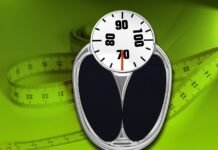Low FODMAP is very crucial if you are experiencing any gastrointestinal problems. However, for this diet to be effective, you must be consistent and cautious, following all the required steps. Fodmap is an acronym for fermentable, oligosaccharides, disaccharides, monosaccharides, and polyols. They represent carbohydrates that the small intestine cannot absorb. Due to these, you can end up experiencing symptoms such as cramping, diarrhea, constipation, and stomach bloating. It is vital to consider following the correct steps when planning a diet with low Fodmap. This article will explore the crucial steps before starting on low FODMAP.
Be Positive
Your daunting journey on taking foods with low Fodmap starts from your mind. The attitude you have and how you embrace the idea determines a lot about the results you are anticipating getting. Don’t think about the beautiful meals you will miss; instead, focus on making different recipes with low FODMAP. This way, you be able to progress when with your journey.
Consult With Your Doctor
Before starting your journey, you must take time and consult with your caregiver or doctor. This will help them determine that the cause of your irritable bowel syndrome is not a result of other medical conditions. It is vital to note that different medical conditions can result in the same symptoms, such as celiac disease, bowel cancer, inflammatory bowel disease, and Crohn’s disease. This helps you make an informed decision, and you be able to treat other medical conditions if there will be found to the cause. The doctor can advise on the next step you should take, such as meeting with a dietitian.
Consult With a Dietitian
Visiting a dietitian is vital to ensure you have the right diet combination. They will advise you and determine if the low FODMAP will work for you or if you will need to take another diet. The dietitian will also help to ensure a balanced diet while taking the FODMAPS, and they can test to find out the FODMAP group that needs to be reintroduced back to your diet.
Learn What You Can and Can’t Eat on Low FODMAP Diet
Knowing what to eat and what not to can be very challenging, especially when it’s your first time. Most people are also confused about the number of carbohydrates required and the type they should take. This is another reason you need to visit a dietitian. You can consider taking meals that contain no FODMAPs, or you can research on the internet or even consult with your dietitian. Some simple mobile applications can also help guide you on the type of low FODMAP foods. If you have questions, always feel free to ask your dietitian or your caregiver; they can direct you.
Avoid Mixing the High and Low FODMAP Food When You Cook
When cooking a meal for your family or friends, avoid mixing your low FODMAP with high FODMAP when you cook. This is because the high FODMAP food will leach to the low FODMAP. The result of this will be the whole meal becoming high Fodmap. Try cooking the high and low FODMAP on different pans or pots and store them in separate containers.
Bottom Line!
It’s essential to ensure you follow the steps above to get the best results and to heal the health condition stressing you. Be positive and patient with the results. Always consult your doctor and dietitian to guide you on what you should do.


























